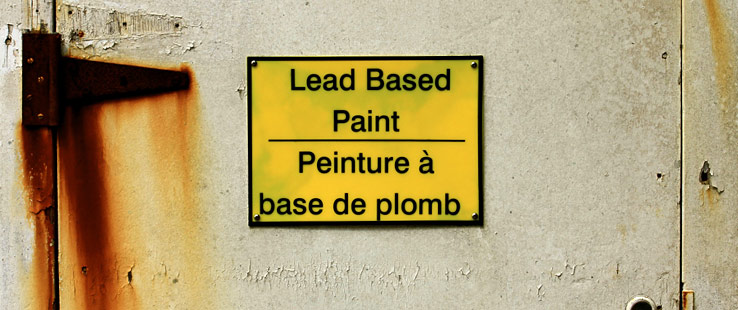The Keys to Correctly Dealing with Lead-Based Paint
 The Environmental Protection Agency’s Lead Renovation, Repair and Painting (RRP) Rule may be difficult to understand for some painting contractors. In effect since April 2010, the rule creates requirements for the special care and handling of lead when repainting or renovating walls, doors, windows or casings, often found in homes built before 1978. Here are a few things to consider when handling a project where lead-based paint is present.
The Environmental Protection Agency’s Lead Renovation, Repair and Painting (RRP) Rule may be difficult to understand for some painting contractors. In effect since April 2010, the rule creates requirements for the special care and handling of lead when repainting or renovating walls, doors, windows or casings, often found in homes built before 1978. Here are a few things to consider when handling a project where lead-based paint is present.
You don’t need to be EPA-certified to comply with the RRP Rule.
You can recommend a certified contractor to do the work. Search for one in your area on the EPA website or contact your local chapter of Painting and Decorating Contractors of America. You can then complete your paintwork after the chosen contractor assures the RRP rules have been met.
But if you do want to become a lead-safe certified renovation firm, applying is easy.
It only takes a few steps. If you work solely in one of these states (AL, GA, IA, KS, MA, MS, NC, OK, OR, RI, UT, WA or WI), follow the appropriate link and apply directly to that state program. Otherwise, submit the application and fee to the EPA: apply online here for faster processing. Next, get your employees trained in lead-safe work practices. Finally, download your personalized certified logo. Once you receive your EPA Lead-Safe Firm Certification in the mail and logo instructions via email, use the logo on your advertising materials.
There may be some flexibility with RRP Rule requirements.
There are situations that don’t lend themselves to executing the RRP requirements to the letter. For example, in warmer climates, covering plants and shrubs with plastic protective sheeting as part of the preparation required by the RRP Rule could kill the plants. Instead, simply hand-scraping old, lead-based paint off of an exterior surface and using a HEPA vacuum could be acceptable in these situations. There may be limitations specific to your geographic region where an RRP training provider can offer guidance.
Customer resistance to the cost of complying with the RRP Rule can be addressed.
Gary Farrar, an RRP-certified painting contractor in Lynchburg, Virginia, says it’s all about educating the homeowner. “The homeowner needs to understand that flakes from improperly scraped lead paint can get carried into the water system and can get trapped in soil,” he said. “Disregarding the rule can potentially place the health of children in an entire neighborhood at risk (as well as a contractor’s own children by bringing lead dust home on work clothes).”
Although it’s illegal and unethical, some contractors ignore the RRP Rule.
With all rules, there are also rule breakers, and it’s known in the industry that plenty of contractors are likely not abiding by the RRP Rule. They should know the EPA enforces the RRP Rule and doesn’t hesitate to fine violators. While the RRP Rule can seem burdensome, the consequences of not complying with its requirements can impact homeowners, families and the environment for years to come. It’s up to the professionals to overcome customer objections and do the right thing.




